Pope Francis


Pope Francis is TIME's Person of the Year. But that is only because Jesus is his "Person of the Day" — every day.
Praises of the pope are flowing around the world, commentary on the pontiff leads all the news shows, and even late night television comedians are paying humorous homage. But a few of the journalists covering the pope are getting it right: Francis is just doing his job. The pope is meant to be a follower of Christ — the Vicar of Christ.
Isn’t it extraordinary how simply following Jesus can attract so much attention when you are the pope? Every day, millions of other faithful followers of Christ do the same thing. They often don’t attract attention, but they keep the world together.
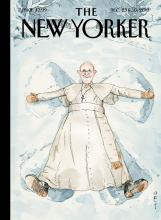
To paraphrase Shakespeare’s musing on a name, “What’s in a cover?”
In the past week, we’ve seen Pope Francis on the cover of Time as the magazine’s “2013 Person of the Year,” followed by The New Yorker’s whimsical cover of the pope as a snow angel. Now, most improbably, he’s on the cover of The Advocate, the magazine for gays, lesbians, bisexuals, and transgender people, that put the message “NO H8″ (No hate) on his cheek. What’s next? Sports Illustrated? Jack and Jill?
If you ever wanted to show that someone reaches across all segments of society, this flurry of magazine covers may be it.
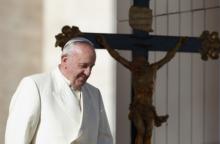
As part of Pope Francis’ pastoral reforms, all 44 senior members of the Roman Curia, or governing body, must take turns hearing confession at a church near the Vatican.
There is even speculation that Francis himself could hear confessions at the Church of the Santo Spirito in Sassia, just outside the Vatican walls, where his bishops and cardinals have been directed to perform the sacrament of penance and reconciliation.
“I think it’s likely the pope will discreetly hear confessions at some point,” said Giacomo Galeazzi, a veteran Vatican watcher from Italy’s La Stampa newspaper. “The pope has long been an advocate of the pastoral aspects of the ministry and now the Curia will as well.”
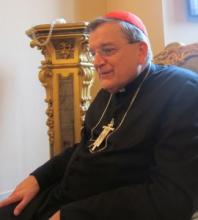
In private conversations, Pope Francis often acknowledges that reforming the Vatican will be a difficult task opposed by powerful interests in the church. Developments on Monday showed both the progress he has made and the challenges that remain.
Case in point: Cardinal Raymond Burke, an influential American conservative who has worked in the Roman Curia since 2008, lost one key post on Monday when he was left off the Vatican body that vets bishops for the pope to appoint. Those appointments are seen as the key to securing Francis’ legacy.
But in an interview a few days earlier, Burke — who remains head of the Vatican equivalent of the Supreme Court — also publicly raised doubts about Francis’ plans to make wholesale changes in a papal bureaucracy in keeping with the pontiff’s vision of a more open, pastoral church.
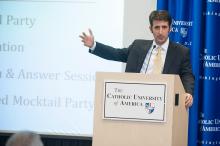
Dozens of Catholic leaders are protesting the decision by the Catholic University of America to accept a large donation from the foundation of Charles Koch, a billionaire industrialist who is an influential supporter of libertarian-style policies that critics say run counter to church teaching.
Charles Koch and his brother, David, “fund organizations that advance public policies that directly contradict Catholic teaching on a range of moral issues from economic justice to environmental stewardship,” says a four-page letter to CUA President John Garvey, released Monday.
The letter was signed by 50 priests, social justice advocates, theologians, and other academics, including several faculty at CUA in Washington.
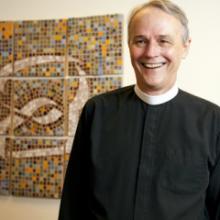
In his first Advent address, Pope Francis directed Christians to be guided by the “Magnificat,” Mary’s song of praise for the coming Christ child. She proclaims that God has “lifted up the lowly and filled the hungry with good things” (Luke 1:52-53). This past Tuesday, Pope Francis heeded his own exhortation by releasing a video message calling for an end to hunger as part of a worldwide “wave of prayer.”
Hundreds of Christian organizations across the globe participated in the “wave of prayer,” which was organized by Caritas International, a confederation of Catholic charities in the Vatican.
“We are in front of a global scandal of around 1 billion people who still suffer from hunger today,” Pope Francis said in his message. “We cannot look the other way.” The wave began at noon on the Pacific island of Samoa and proceeded west with people of faith from each subsequent time zone participating at noon their time.

TWO OF MY greatest teachers were Latin American men, both ordained as Catholic priests. One, Archbishop Oscar Romero, was assassinated in 1980. I never met him, being a 20-year-old American who’d never set foot in El Salvador or anywhere else in Latin America. But Romero made me, a lapsed Catholic, wonder why his views—our views, if Christian social teaching means anything at all—would be viewed with murderous hostility by the Salvadoran elite. After all, it was all right there in the Book. Wasn’t it?
The truth was, I didn’t know. Was it worth looking at books about these matters? That’s what we believed in medical school: Look it up! So Romero led me to the second of these teachers who, I’m happy to say, is alive and well and living (mostly) in Lima, Peru. Gustavo Gutiérrez, a diminutive and humble Dominican priest and a great friend of Romero’s, taught me through his books, from The Power of the Poor in History toWe Drink from our Own Wells, and later through his friendship and his almost mystical (to me, in any case) optimism.
Over the course of my 20s, the slender, frayed thread of my own faith, which I had believed cut, slowly came back into view. There was a filament a bit stronger than imagined, made visible in part by my Haitian hosts and patients and friends, and in part by Catholic social activists working against poverty in settings as different as tough neighborhoods in Boston, the farms of North Carolina, and the slums of Lima.
Some were nuns or priests, some were engaged laity, from many professions. Most were people living in and struggling against their own and others’ poverty. Their activism taught me a lot about a space in the Catholic Church I’d not seen clearly before, and about the promise of long-term engagement in the monumental struggle against poverty and discrimination in all its forms. That includes gender inequality, no stranger to the institution. Most of the most inspiring activists were women.

ROME — It’s official, but no big surprise: Pope Francis is now the most-talked-about person on Facebook, according to information released Dec. 10 by the social media giant.
Pope Francis took the top spot, followed closely by Royal Baby George.
FOR CENTURIES Christians have pondered what it means to be created in the image of God. Throughout my own academic career, I’ve been haunted by the mystery of Genesis 1:27: “God created humanity in God’s own image, in the divine image God created them, male and female God created them” (CEB).
What does this passage reveal about us, and consequently, what does it reveal about God? The second half of the passage is equally contentious and challenging. Does “male and female God created them” imply that men and women reflect the image of God equally?
While Genesis 2 to 3, with its narrative of sin and betrayal, is captivating, there is something about the simplicity, mystery, and implications of Genesis 1:27 that resonates even today. I would argue that Genesis 1:27 is the foundation of an egalitarian anthropology where male and female are at the center of theological reflection, where they reflect the image of God without hierarchy or preference. The existence of distinctive genders in humanity does not imply any sort of sexuality within God. Instead, the metaphor retains the unknowability and mystery of God. It reminds us that there are similarities and great differences between the created and Creator. The metaphor “image of God” both reveals and conceals something about the nature of God—and the nature of humanity.
Genesis 1:27 has been a source of inspiration, debate, and controversy throughout the history of Christianity. The church fathers (writing between 150 and 500 C.E.) often implied that women must negate their very womanhood in order to reflect their creation in God’s image. These male writers in the early church viewed female bodies as an impediment to reflecting the image of God. Augustine of Hippo argued that although women spiritually share the image of God, they do soin spiteoftheir bodies—women’s bodies corrupt and diminish their ability to reflect the image of God. In this thinking, women reflect a distorted image; we are inherently deficient.
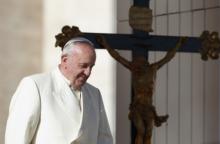
It’s one thing to say kind words about gay people and atheists while admonishing those who would bury them in stones.
It’s one thing to walk humbly and call the Catholic Church to compassion for the poor.
It’s one thing to kiss a horribly disfigured man from whom most people would run in disgust.
But apparently, it’s quite another to start calling out growing economic inequality and naive faith in capitalism. By doing just that in his recent encyclical, Pope Francis has touched a third rail in conservative American politics. So begins the backlash.
Yet in the new round of skirmishing around Francis and his supposedly “liberal” views, U.S. political pundits and news media wags — both progressive and conservative — are missing the point about the pope and what he’s up to. Their mistake? They see his words and deeds through the lens of American politics and ideology. What Francis is doing is prophetic, not political, and we should recognize that he’s playing, to his credit, in a whole different arena.
![St. Peter in Prison (The Apostle Peter Kneeling). Photo courtesy Rembrandt [Public domain], via Wikimedia Commons/RNS](https://sojo.net/files/styles/medium/public/blog/Rembrandt_st._peter_in_prision.jpg)
When Pope Francis cradled the small box said to contain nine bone fragments believed to be the mortal remains of St. Peter, the first pope, he fanned the flames of a long-standing debate over the authenticity of ancient church relics.
Most old churches in Italy contain some ancient relic, ranging from a glass tube said to hold the blood of St. Gennaro in Naples to a section of what is believed to be Jesus’ umbilical cord in the Basilica of St. John of Lateran in Rome. Perhaps the most famous religious relic in Italy — the Shroud of Turin, believed by many to be Jesus’ burial cloth — will go on display again in early 2015, and Turin Archbishop Cesare Nosiglia this week invited Pope Francis to attend its public debut.
But St. Peter’s bones are of particular importance, since they are the very basis — both architecturally and spiritually — for Catholicism’s most important church. And yet the bones were only discovered during a series of excavations in the 1940s, almost 1,900 years after Peter died, in either 64 or 67 A.D.
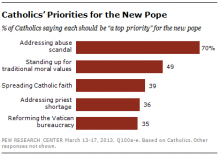
Pope Francis is creating a special commission to deal with the clergy sexual abuse crisis on a global scale, a step that comes amid growing criticism that Francis had not given sufficient attention to the scandal.
Boston Cardinal Sean O’Malley made the announcement on Thursday in the Vatican where he was meeting this week with Francis and the other members of the so-called “Gang of Eight” cardinals that the pope chose to help him reform the Roman Curia.
O’Malley, who is the U.S. bishop with perhaps the most credibility on the abuse issue, listed a range of programmatic ideas for the commission, whose members are expected to include lay people, mental health professionals, and other experts in the field as well as leading churchmen.
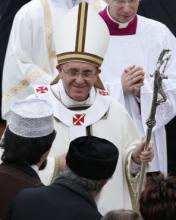
Vatican officials say reports that Pope Francis has been slipping out at night to visit the homeless in Rome are “simply not true,” though that hasn’t stopped the stories from capturing the public imagination.
That’s probably because such tales seem right in line with Francis’ unconventional and pastoral style. What’s more, the faithful always love it when a church leader sneaks under the radar to make a point — witness the fascination with the Mormon bishop who recently disguised himself as a panhandler and then revealed his identity when he climbed into the pulpit.
But breaking out of the “gilded cage” of the Vatican has been a dream of many popes and other churchmen who fear losing touch with their calling as pastors — or simply their connection to ordinary life.
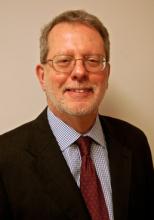
My first career: print journalism. Current status of that field: on life support.
My second career: pastoring neighborhood churches. Current status of that field: on life support.
My third career: writing and publishing books. Current status of that field: on life support.
My fourth career: implementing client-server data management systems. Current status of that field: on life support.
Do you see a trend here? I did. So now I try to stay nimble and to keep moving. My publishing business is entirely electronic. I have cycled through three websites and three subscription systems in 10 months. I do more of my church consulting online.

Pope Francis on Tuesday released his first apostolic exhortation since his election in March. The message, “Evangelii Gaudium” (“The Joy of the Gospel”), challenges Catholics — both laity and clergy — to pay more attention to evangelizing the world.
While most American evangelicals do not usually read papal pronouncements, it would be a shame if we did not familiarize ourselves with Francis’ newest document, for there is much in it that evangelicals could embrace:
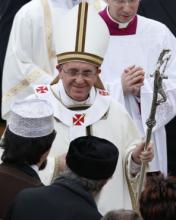
Laying out a blueprint for the issues that are likely to define his papacy, Pope Francis on Tuesday issued a biting critique of capitalism, calling on world leaders to fight against poverty and for the rich to share their wealth, and urging the media to adjust its priorities.
“How can it be that it is not a news item when an elderly homeless person dies of exposure, but it is news when the stock market loses two points?” Francis asked in an 84-page “apostolic exhortation” that is widely seen as a road map for his papacy akin to a presidential State of the Union address.
“How can we continue to stand by when food is thrown away while people are starving?” he asked. “Today, everything comes under the laws of competition and the survival of the fittest, where the powerful feed upon the powerless. As a consequence, masses of people find themselves excluded and marginalized: without possibilities, without any means of escape.”
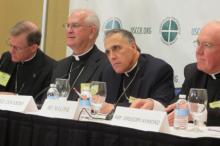
After a closed-door session at their annual meeting in Baltimore this month, the U.S. Catholic bishops issued an unusual "special message" reaffirming their long-standing opposition to the Obama administration’s birth control insurance mandate.
On one level, the declaration and the united front were no surprise: The American church hierarchy has made opposition to the mandate a hallmark of its public lobbying efforts, framing the issue as an unprecedented infringement of religious freedom.
Several bishops even vowed to go to jail rather than comply with the mandate. Others threatened to shutter the church’s infrastructure of hospitals, charitable ministries, schools, and universities rather than accept a policy that they say would force Catholic employers to provide health insurance that covers sterilization and perhaps abortion-inducing drugs as well as contraception.
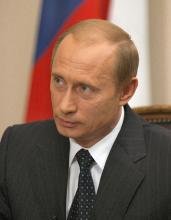
Next week’s summit between Pope Francis and Russian President Vladmir Putin may be the most important meeting between a pontiff and a visiting head of state in nearly a quarter of a century, with war-torn Syria expected to be the top priority.
Francis has met with more than a dozen heads of state or government as pontiff, and Putin has met with both Pope Benedict XVI and Pope John Paul II. But this meeting stands out.
It’s been just four years since full diplomatic ties were re-established between Russia and the Holy See, set against a backdrop of centuries of tension between the Vatican and the Russian Orthodox Church.
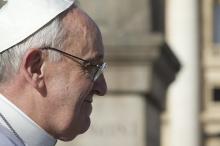
When Pope Benedict XVI retired in February, I wrote an article in appreciation for his papacy. While he served as a great model of humility in stepping down from his role as Pope, what I appreciated more about Pope Benedict was his first encyclical, turned into a book called God is Love . In it, Benedict wrote these profound words:
Love is possible, and we are able to practice it because we are created in the image of God. To experience love and in this way to cause the light of God to enter into the world — this is the invitation I would like to extend with the present encyclical. (93)
God is Love is a powerful written reminder of the essence of Christianity. I hope more Christians of all stripes will read it.
Indeed, I appreciate Benedict for writing those beautiful words, but I love Pope Francis because he’s publicly living those words.
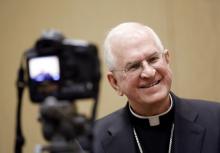
After serving as vice president of the U.S. Conference of Catholic Bishops for the past three years, there was little surprise when Archbishop Joseph Kurtz of Louisville, Ky., was elected this week to the top post in the American hierarchy.
Yet the nearly 250 churchmen would have been hard-pressed to find a better president to help them pivot toward the new, more pastoral path set out in recent months by Pope Francis.
Kurtz has earned his stripes with the hierarchy’s conservative wing thanks to his past work heading their campaign against gay marriage, but he was also molded by his early years as a pastor and his work in social justice — experiences he mentioned early and often when facing reporters after his election on Tuesday.